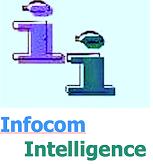According to Jack Dorsey, the founder of Twitter, the company did not have a real business model until recently since they are now targeting advertising revenue. They concentrated on getting a critical mass of subscribers first which then gave rise to an exponential traffic growth. They now have more than 190 million users, which are tweeting 65 million times a day . Twitter’s market value has reached $7 billion in January 2012, according to SharesPost. Twitter’s new business model relies on charging for access to its full data stream. According to GigaOm , it will feature promoted tweets in search results and promoted trends in its trending topics . It will publicize sales and other deals. Twitter is even considering inviting users to pay to promote their Twitter accounts. Promoted tweets would represent a Twitter-specific version of Google AdWords. Thus, Twitter is still experimenting with new sources of revenues. As for Facebook, Telcos will have to determine if they want to have Twitter as a partner and at what conditions.
Jack Dorsey, the CEO and co-founder of Twitter recently gave an interview to TechCrunch:
"What is Twitter compared to Facebook, Google+ and other social networking services?
Twitter is different because we’ve always been about hosting public conversations, that are real-time to boot. There’s always been this perception that you need to tweet to use Twitter, but we see a huge number of people using it for the discovery of news, events, content and so on. Our focus on simplicity is another differentiating factor....
Twitter was obviously born from a blogging-centric mindset, but where we shine is real-time discovery, being able to open up Twitter and instantly see what’s going on in the world, or with your friends and family. When we recently redesigned the website, we focused a lot on the discovery part of the equation, making it very simple for people to get value out of Twitter without necessarily participating...
Twitter has just acquired Summify, in order to deliver relevant content to people, instantly.
In the long run, is Twitter going to become a destination for information, or a distribution channel that brings traffic to other websites?
The beautiful thing about the service is that it is both. The most amazing thing about Twitter is that it reaches every single device on the planet, from the cheapest phone to the most advanced smartphone. We’re not just about distribution, but also about people sharing content on Twitter.
Do you want to be a distribution channel or a destination site?
Well, it’s a blurry line, but in essence we think of every tweet as a destination on itself, while Twitter is also a mechanism for distribution of content.
It look a long time for Twitter to develop a business model, and it’s based on advertising. We can agree that Twitter is big in perception but comes up short when it comes to engagement and stickiness. Do you need the same level of engagement other social networks enjoy to make your business model work?
Twitter’s business model has been in development for quite some time, and it works. Advertisers use it and we see them coming back for more. The market has vetted, and confirmed that they want to keep using it. Twitter’s ‘Promoted’ products — including promoted tweets, accounts and trends — are currently seeing 3 to 5 percent engagement. We’re always looking to increase engagement, but I also think about other things, like that fact that our technology can have a positive impact on the world and how businesses interact with their customers.
So what you’re saying is that even with the extremely minimal exposure of ads that you deliver, engagement can still prove sufficient enough to make for lots of revenues down the line?
Absolutely, it’s huge. Every signal that we’re getting from both users and advertising proves to us that people want more of it.
What’s more important to you as a business right now: make money or get more users? And you can’t answer both.
Both. It’s not really a fair question. We think of revenue as not a destination but as oxygen that feeds the model and vice versa. You can’t build a product without revenue, but you can’t focus on revenue without having a product either. Twitter is an organic system and product. Time and time again, you see companies whose revenue model makes their products better, just look at how Google AdSense improved search.
Source of the interview: TechCrunch.
Louis Rhéaume
Infocom Intelligence
louis@infocomintelligence.com
Twitter: @InfocomAnalysis

A blog on the convergence of info-communications industries: communications, computing, electronics, entertainment, publications and education. Strategic, technological and financial analysis. English and French blog. Cette chronique traite de l’évolution des industries de l’information et des communications et couvre des aspects stratégiques, technologiques et financiers, comme l’économie du savoir et de l’innovation. L’auteur est Associé principal de Infocom Intelligence.
Labels
finance
(58)
strategy
(39)
innovation
(36)
technology
(29)
Internet
(25)
mobile internet
(25)
stratégie
(21)
applications
(20)
business models
(19)
mobile technologies
(17)
venture capital
(17)
Apple
(13)
télécommunications
(13)
consumer internet
(12)
media
(12)
telecommunications
(12)
mergers and acquisitions
(11)
video games
(11)
wireless
(11)
technologie
(10)
Android
(9)
technologies de l'information et des communications
(9)
téléphones intelligents
(5)
Subscribe to:
Post Comments (Atom)
No comments:
Post a Comment